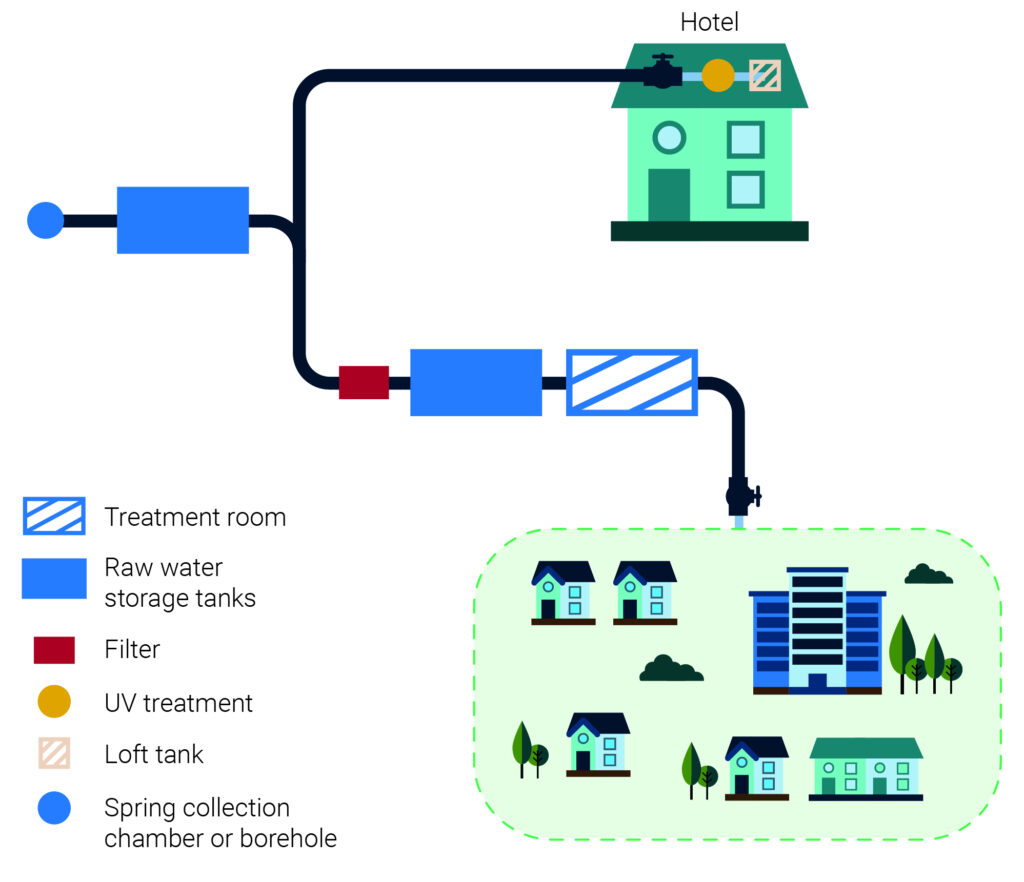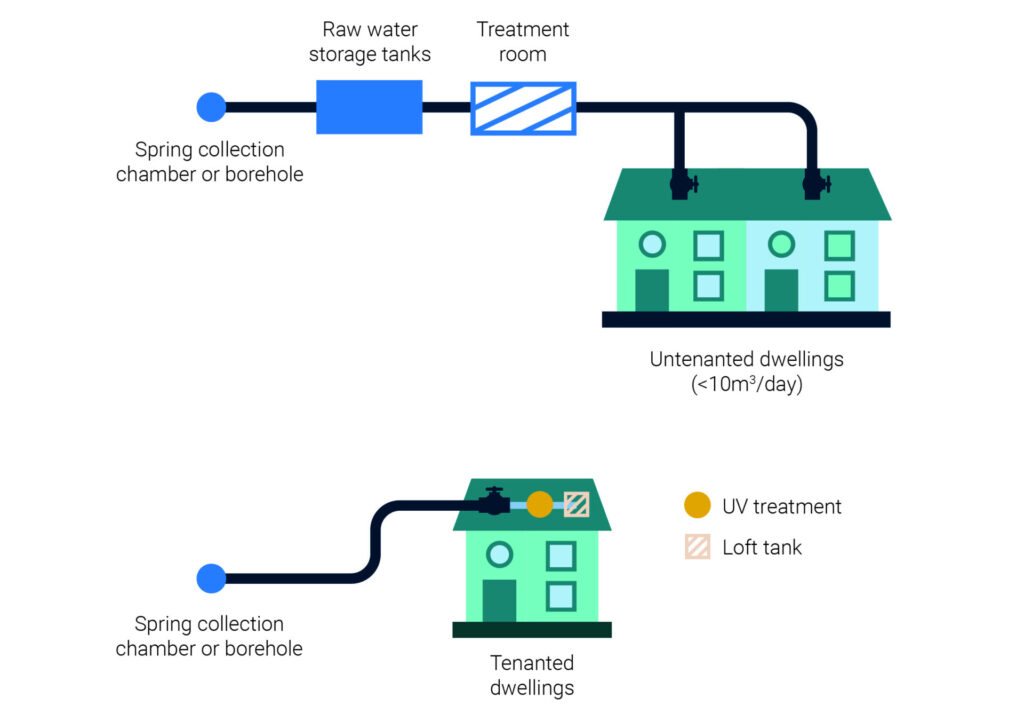Types of private supplies (Wales)
Under the Private Supplies (Wales) Regulations private supplies in Wales are categorised into four types of supply:
Regulation 8 supplies are those where a water supply is provided by a water company, which is then further distributed by a person other than a water company. These supplies require a risk assessment, which must be reviewed and updated every five years and monitored at a frequency dependent on the outcome of the risk assessment. Local authorities may recover costs for these activities.
Regulation 9 supplies are commercial or public use supplies. They include supplies where the average daily volume of water consumed for domestic purposes is 10 m³ or more per day of water (approximately more than 50 people); or any supply where the water is used as part of a commercial or public activity such as breweries (irrespective of the volume consumed). These supplies require sampling for two groups of parameters at frequencies that are specified in the regulations, based on the volume consumed. The minimum frequency is once a year. A risk assessment must be carried out and reviewed and updated every five years. Local authorities may recover costs for these activities up to the maximum amount specified in the regulations. A regulation 9 supply is depicted in the following schematic (note that all installations will vary):

Regulation 10 supplies are single dwelling supplies where a water supply serves only one private dwelling where no commercial activity takes place. These supplies exclude those serving tenanted single dwellings (see regulation 11 supplies). Local authorities may complete a risk assessment or monitor these supplies and must do so if the property owner or occupier requests it. Local authorities may recover costs for these activities (up to a maximum amount specified in the regulations). A regulation 10 supply is depicted in the following schematic (note that all installations will vary):

Regulation 11 supplies include all other supplies not covered by regulation 8, 9, or 10. They include small shared supplies, where the water consumed for domestic purposes is less than 10 m³ of water, and supplies to tenanted single dwellings. These supplies require monitoring every five years. The risk assessment for these supplies must be be reviewed and updated every five years. Local authorities may recover costs for these activities (up to a maximum amount specified in the regulations) A regulation 11 supply is depicted in the following schematic (note that all installations will vary):

Note: The regulations apply in relation to private supply water supplies intended for human consumption, as defined in regulation 3 of the Private Supplies (Wales) Regulations. “Human consumption” includes drinking, cooking, food preparation and other domestic purposes as defined in the Water Industry Act 1991 (see section 218), and includes any of the following: washing clothes, bathing, hand washing, food and drink production and toilet flushing.
